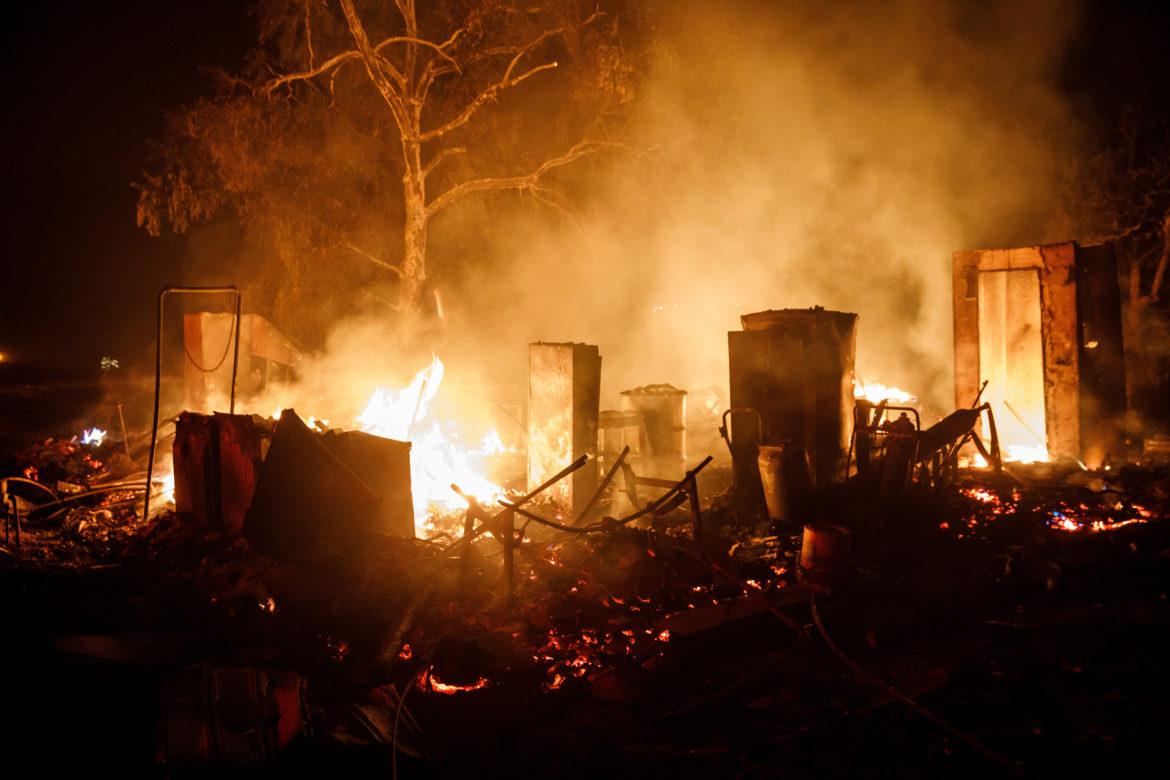There is no denying that California is prone to wildfires. Northern California is suffering from multiple fires deemed as some of the worst the state has ever seen.
While fires in California are presumably a commonplace and what is almost expected of the state, according to the New York Times, most wildfires are either intentionally or accidentally started by people.
“During the summer and fall, vegetation dries out under conditions of high temperature and drought,” David Klein, Professor of Mathematics & Director of the CSUN Climate Science Program, said. “So when lightning strikes or there is a spark from a car or a campfire, there’s more fuel available for the fire.”
Human carelessness remains a major factor. However, climate change and global warming still play significant roles in California’s rising temperatures.
“Scientists, in general, agree that climate change with rising temperatures and longer heat waves in the affected region is propitiating the dryer conditions for more devastating and extensive fires,” Cristina Cadavid, professor in the Department of Physics and Astronomy, said.
The Mendocino Complex fires are composed of two blazes, the Ranch and River fires. These have burned over 330,00 acres, a span that could stretch well across the bay area.
The Carr Fire, near Redding, has scorched over 200,000 acres, nearly as large as Sacramento County, and has caused severe damage to structures and houses and has led to ten reported deaths so far.
These are just a few of the catastrophic fires that have collectively burned through over a million acres in just a short amount of time this summer alone.
While the typical reasons behind fires in California remain the same, the frequency at which they occur has changed tremendously.
“What has changed are the number of days of excessive heat, high velocity-persistent wind and the accumulation of fuel in the form of thick undergrowth stands of trees affected by drought and disease, which makes them more vulnerable to fire ignition and spread,” Professor of Geography and Environmental Studies Amalie Orme said.
A warming global climate retains a lot of moisture which leads to excessive rains but not an equal amount of snow. Less snow means drier soils, and with more heat waves on the way, the California landscape is the perfect target for intense, unprecedented fires.
“Global warming is the greatest threat that humanity has ever faced, and it will affect the lives of young people the most,” Klein said.
The glum realities of the planet’s current situation are only perpetuated by the current U.S. administration’s denial that such occurrences take place. However, if people have the ability to cause destruction, people also have the capability to individually and communally lessen the strain global warming is causing.
“The climate crisis is so immense that voluntary individual actions such as reducing waste, recycling, avoiding air travel, though positive, are extremely limited,” Klein said. “Collective action is required.”
The current rate of which greenhouse gases are emitted from human activities, stemming from carbon dioxide, methane and nitrous oxide amongst others, could lead to an increase of four to seven degrees Celsius of global average temperatures before the end of the century.
“What we have been seeing lately is the effect of a mere one degree Celsius of warming compared to preindustrial times,” Klein said. A sharp increase of four degrees could start collapsing civilization and anywhere between six and seven could start to lead to the extinction of living beings.
“As a community, we can do several things that collectively will help this situation, including being diligent in removing dead vegetation in the urban and urban-wildland interface; careful management of water, timber and energy resources,” Orme said. “For the major wildfires we are seeing, this means understanding that clearance of forest in a responsible manner is one area that can be implemented and has now been legislated for US Forest Service policy.”











